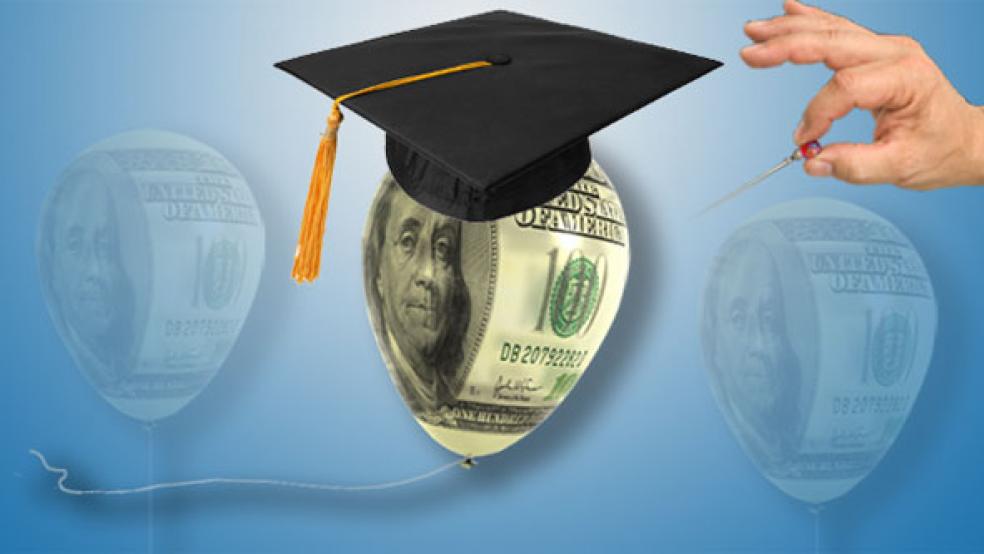For the last several days, Barack Obama has been trying to mitigate the damage done to his campaign from his claim in Roanoke, Virginia that small business owners didn’t deserve credit for their own success. “You didn’t build that,” Obama told business creators in his speech, “someone else made that happen.” Later, Obama insisted that this referred to the infrastructure that allowed small businesses to grow and thrive, but even that makes no sense.
Government may have built infrastructure, but they did so with capital generated by the free markets created by businesses and consumers. If anything, we owe the existence of that infrastructure more to those who risked their fortunes in order to create more wealth, jobs, and prosperity that fuel those government projects than others who chose to avoid risk and work in the businesses created by risk-takers.

This week, we have another example of credit-shifting, almost in a literal sense. In this case, though, the Obama administration wants to tell young men and women “you didn’t build that” when it comes to their student loans. The new Consumer Financial Protection Bureau, created by the Dodd-Frank regulations passed in 2010, chose as one of its first major initiatives to push for a reversal of a 1977 law that blocked bankruptcies from discharging private student-loan obligations. The change would leave private lenders holding the bag for billions of dollars spent on college education, while leaving students free to use their degrees to further their own economic outcomes.
Let’s first visit the history of student loans. Until the late 1950s, loans for college education were relatively uncommon and relied on private risk. Usually that meant having the parents either take the loan directly or co-sign, as teenagers don’t make for good credit risk. The federal government saw an interest in fostering better access to higher education and created taxpayer-backed guarantees on qualifying student loans for private lenders. Later in the 1970s, dissatisfied with the results of that intervention in the lending market, the federal government launched its own direct loan program that bypassed private lenders. In 2010, the Obama administration ended the subsidies for private lenders that allowed them to lend without the normal risk associated with the age of college students, effectively nationalizing the student-loan industry.
That still leaves a large number of people who have significant student-loan debt, a problem that had been escalating during the entire length of the government intervention in the market. Thanks to subsidies, demand for college placements rose steadily. The resources to meet that demand didn’t grow at a commensurate pace, which meant that prices rose on tuition and associated costs. As prices rose, government spending on grants and loans grew, which in turn fueled an ever-spiraling cycle of cost increases – and deeper debt for students.
According to the New York Federal Reserve, student-loan debt for those under 30 has risen 56% since 2005 alone, thanks to The Higher Education Bubble, as law professor and political commentator Glenn Harlan Reynolds titled his recent book on the subject. Reynolds warns that this bubble is ready to pop. “Bubbles form when too many people expect values to go up forever,” Reynolds writes in his introduction. “Bubbles burst when there are no longer enough excessively optimistic and ignorant folks to fuel them. And there are signs that this is beginning to happen already where education is concerned.” What would be the scope of the damage done by a bubble burst in higher-ed lending? The aggregate debt from private student loans stands at $150 billion, with 2.9 million borrowers, averaging $51,724 per student.
Instead of curbing the artificial demand caused by the government intervention in lending markets, the Obama administration wants to stiff the very lenders that relied on the 1977 law forbidding bankruptcy on student loans as well as the government subsidies that caused them to conduct that high-risk lending in the first place. That could wipe out a large amount of capital on the books at the moment, further destabilizing private lending markets overall and possibly risking bank health in the bargain. Not every one of those borrowers would declare bankruptcy, but the temptation that this regulatory change presents would probably have a significant percentage ready to do so.
For critics of the CFPB, this proposal tips the hand of the administration that insisted on separating the agency from financial-institution regulators. Senator Bob Corker (R-TN) pointedly told CFPB’s student loan ombudsman, “I think you can see now why so many of us thought it was a really terrible idea to have a consumer agency separate from the financial regulators,” which otherwise would have had to take into account the impact this would have on lenders and their investors. It shows that the Obama administration intended the CFPB as a means to redistribute wealth through arbitrary bailouts of consumer classes – and it doesn’t seem like a coincidence that the younger borrowers most likely to take advantage of this opening are the very base of voters Barack Obama needs for his re-election.
Instead of handing out free passes to renege on debt, the Wall Street Journal wondered why the Obama administration doesn’t address the real acute problem for these borrowers – an economy that doesn’t produce jobs. “Wouldn't it be easier merely to encourage job creation,” the editorial board asked, “rather than try to anticipate and make taxpayers pay for every consequence of joblessness?” Yes, it would – and the arbitrary destruction of billions in student-loan debt capital would make it even more difficult for others to get the loans they need to open new businesses and expand existing ones.
In order for an economy and its lending markets to operate efficiently, we have to expect people to pay back debts they incur, especially when they receive something of value from it, like a college education that would normally add long-term economic advantage to the borrower in a healthy economy. We need to tell students, “You built that debt,” and tell President Obama to rein in his CFPB forthwith.






